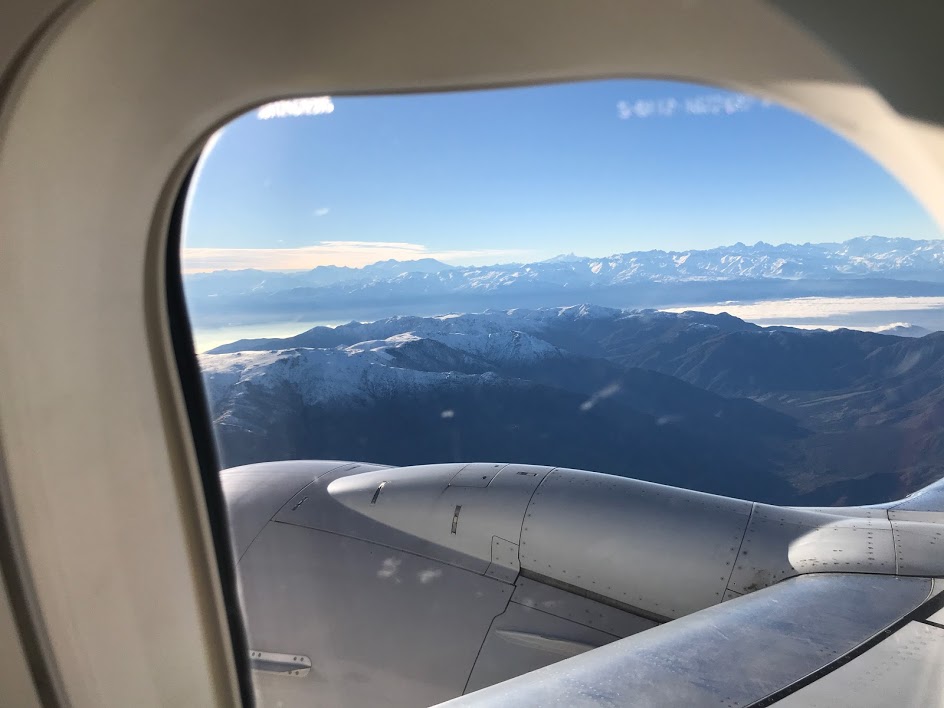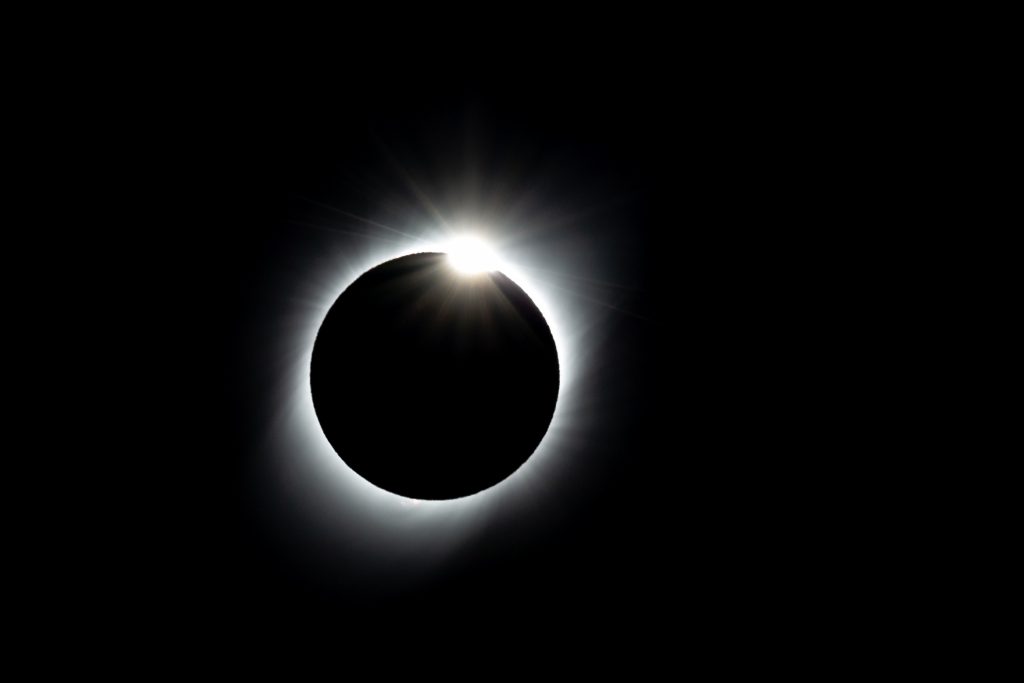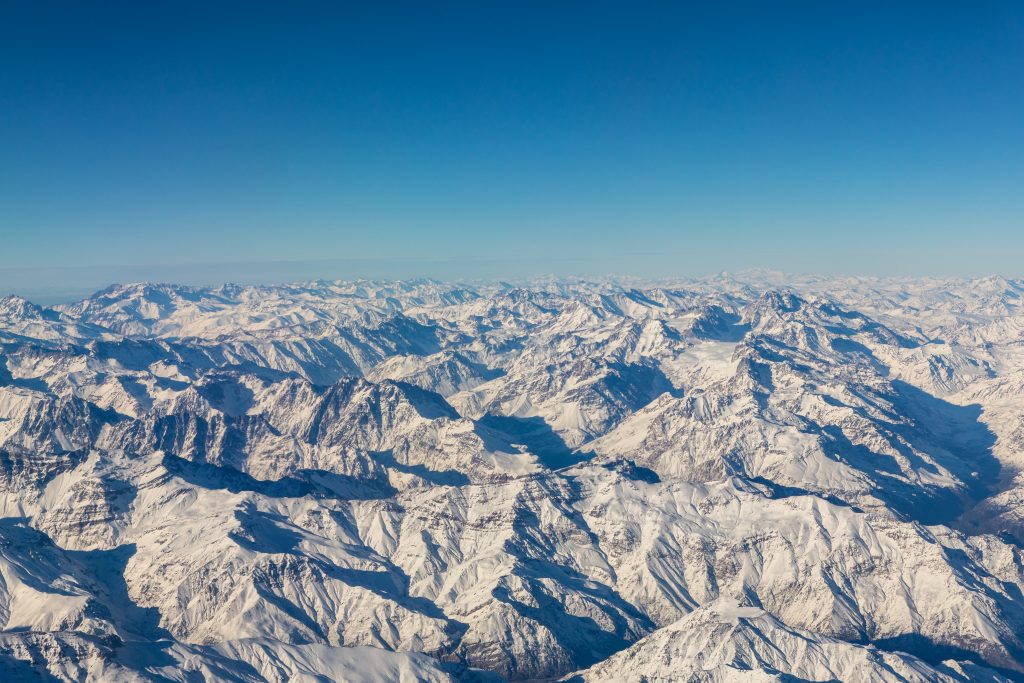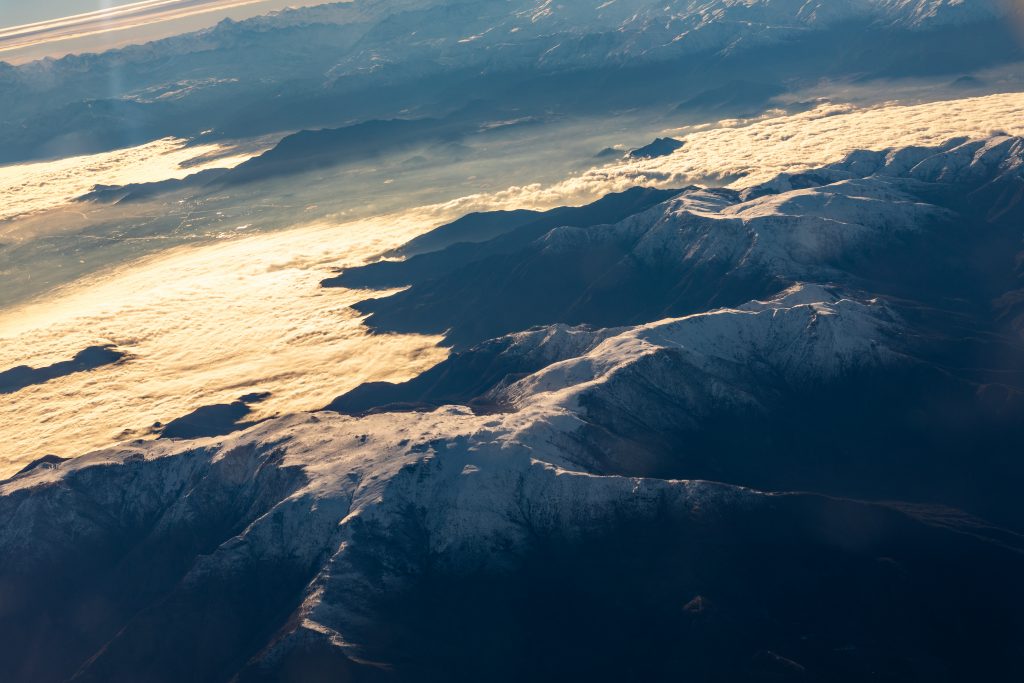6 July 2019
It’s Not Easy Finding The Shadow of the Moon
Posted by Dan Satterfield

GOES-16 captured the shadow of the Moon crossing Chile and Argentina Tuesday evening. I was near La Serena Chile to witness it. Click image to see large animation.
When the Moon blocks the sun during a solar eclipse, there isn’t a big difference between 70 and 90%, but the difference between 99 and 100% is jaw-dropping! It’s something you remember for the rest of your life. I’ve now seen it twice. My first was two years ago near the Wyoming/Nebraska border, and number two was this past Tuesday near La Serena in Chile.
I traveled to Santiago to meet up with my friend and fellow meteorologist Matthew Cappucci who was celebrating his graduation from Harvard while I celebrated my 60th birthday. Matthew and I witnessed the 2017 eclipse and on the way home, we both decided we must see this one!
If you just stay put, you’ll see a total solar eclipse in your back yard once every 375 years, so if you want to experience one, you usually have to travel. Often to the other side of the planet.
For this one, getting myself into the shadow of the Moon turned into a real challenge! My American Airlines flight from Miami to Santiago left without me because my connecting flight was delayed from Philadelphia! (AA rebooked me on Copa Air from Fort Lauderdale to Santiago (via Panama City) 24 hours later and handed me a hotel/taxi voucher. At 4 AM Saturday the taxi dropped me 35 miles away in Fort Lauderdale. Imagine my feeling though when the desk clerk says, “The voucher’s good but we are booked!”
So, I got out my credit card and walked with my bags for a half mile in search of a hotel. I found one eventually (while thinking about being age 60 and getting too old for this!). After dinner (Pepsi and a candy bar), I finally got some sleep, just as Air Canada got Matthew to Santiago.

Crossing the Andes into Chile after a diversion to Mendoza Argentina. Dense fog made getting to Santiago difficult!
My second attempt to reach the Moon’s shadow was not smooth sailing either. After a connection in Panama City, I was at last on approach to Santiago at 4 am Sunday. This time dense fog caused a missed approach and a diversion to Mendoza, Argentina. Not far, but on the other side of the Andes. Now, for most people, this would be bad, but the opportunity to cross the Andes at sunrise, and add an Argentina stamp to my passport was ok with me! COPA airlines even got us some rest at the Park Hilton in Mendoza on a lovely clear winter evening.
I had to cancel my hotel reservations for Saturday evening and my rental car reservation was canceled when I could not arrive. This was a big worry, since the demand because of the eclipse was extremely high.
I finally reached Santiago early Monday morning, and thanks to Matthew who reserved the last rental car with an automatic transmission (in perhaps all of Chile), we were off to La Serena Monday morning. On the 580 km drive up the Pan-American highway, we talked about the weather (You expected different?). We both thought that it was very likely that the normal stratus clouds along the coast this time of year would not be there Tuesday evening, but the safe bet was to go inland to areas that would almost always be clear.
The thing about solar eclipses is that being in the right spot is not enough. The skies have to cooperate as well and we thought our chances were very good. The weather in this area is similar to that of San Diego, California with a cold current offshore keeping the ocean very chilly, and this chilled marine air makes a lot of low clouds. In San Diego it’s the California Current that brings cold water down from the north. Off of La Serena Chile it is the Peru current that brings cold water from around Antarctica south. This cold current keeps Chile dry and comfortable with a landscape around La Serena much like that of inland California.

Image from NASA
Eclipse day (Tuesday 2 July), brought clear skies, and we headed 50 km NW of La Serena on a dirt road that ended on top of mountains surrounded by stunning scenery. The sublime setting brought to my mind the words spoken by Buzz Aldrin as he became the second man to set foot on the Moon: “Magnificent desolation.”
Matthew reported on the eclipse for the Washington Post and you can see some of our images and video in his piece there. Checkout the June 2019 Bulletin of the American Meteorological Society. It has the results of an in-depth study of how the atmosphere behaved during the 2017 event across the U.S. In general, the temperature drops and the winds do as well. We noticed both at our spot in Chile and being over 1500 meters in a very dry airmass, the temperature drop was at least 5 degrees C. We also remarked that this eclipse was darker than the 2017 event. The width of the Moon’s shadow was wider for this one and we were nearly at the centerline of that shadow!
A total solar eclipse is the equivalent of the Universe slapping you on the head and saying:
“Hey Earthling! You live on a tiny blue ball in an immense void of cold and black. Take better care of it!”

Diamond ring effect as the total eclipse began. My photo and all rights reserved. Teachers feel free to use for non-commercial education purposes.
Here’s why: Put a dime flat against a classroom globe. That dime shows how thin our atmosphere really is, and it’s all we have to protects us from the cold and dark above.
You may be asking yourself if it was really worth it to travel over 15,000 km round trip for two and a half minutes inside the shadow of the Moon.
Let me assure you that the answer is resounding YES!
The eclipse was spectacular and the two minutes seemed like 30 seconds. It was indeed clear on the beaches of La Serena and people who were there remarked that the simultaneous gasp of 250,000 people was something to experience as well.
Another total solar eclipse will cross Chile and Argentina in just 17 months. Matthew and I will be there on 14 December 2020. I highly recommend experiencing one at least once.
The video below is what it looked/sounded like courtesy of my iPhone. I was so excited I confused the diamond ring with Bailey’s beads and had to edit out a few mild expletives! The diamond ring effect was so stunning it left me babbling! While talking during this video, I am taking pictures with my Canon 5d Mark 4 on a 100-400 lens, and while you can see Matthew, I cannot.
My goal was to take photos for 30 seconds, then stand up and shoot video. I ended up taking pics for well over 85 seconds. Matthew planned to stand in front of a light with his Harvard Diploma and the eclipse behind him. Not your usual graduation photo, but his camera malfunctioned and the video was corrupted. You can see him hold up his diploma near the end of my video. One other thing to note: the camera brightens the video as it gets darker, so it was much darker than it looks. The light gets dim at 98% and dimmer still at 99% but then suddenly drops dramatically in about ten seconds as you enter totality with stars clearly visible.
On the way back, I saw a news report that June 2019 was the hottest on record globally. It was also the 517th consecutive month with a temperature above the 20th-century average. We are not taking care of our tiny blue ball very well.
(Note: In case you are wondering, after an initial refusal, AA gave me a refund credit today that totally covered the hotel and two-course dinner (Pepsi and Snickers) in Fort Lauderdale. That seemed more than fair to me, and in spite of the fog, COPA got me into Santiago in time to reach the eclipse with amazing views of the Andes as we crossed from Mendoza at sunrise to try again. Oh, and I got to add an Argentina stamp in my passport! )

Crossing the Andes from Mendoza Argentina to make another attempt to land in a foggy Santiago. It was not successful.

Even at 27,000 feet, the mountains were just below us. This is Mount Aconcagua, the highest peak in the longest mountain range in the world. Aconcagua is just under 7,000 meters high! Thanks to the fog and COPA airlines, I had a fabulous view of it twice!

You can see the fog in the Santiago area as we crossed over the Andes. The airport was particularly socked in and we could not land.



 Dan Satterfield has worked as an on air meteorologist for 32 years in Oklahoma, Florida and Alabama. Forecasting weather is Dan's job, but all of Earth Science is his passion. This journal is where Dan writes about things he has too little time for on air. Dan blogs about peer-reviewed Earth science for Junior High level audiences and up.
Dan Satterfield has worked as an on air meteorologist for 32 years in Oklahoma, Florida and Alabama. Forecasting weather is Dan's job, but all of Earth Science is his passion. This journal is where Dan writes about things he has too little time for on air. Dan blogs about peer-reviewed Earth science for Junior High level audiences and up.
Wow, Dan! That was an amazing experience! Thanks for capturing it and sharing it with us. I’m so glad you got there in time!